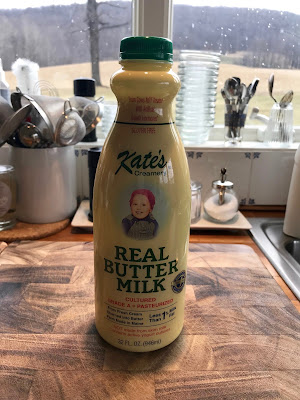


at 6:00 a.m., looking for tracks left by sea turtles who returned to the same place they were born to lay their eggs, I would see shrimp boats trawling the waters in the distance.
For dinner there was fresh shrimp bought at Gisco's on St. Simon's, and butter beans, corn, tomatoes, and Georgia peaches from the farmer's market where local growers sell their produce. On these islands Spanish moss hangs off the old live oaks that line the drives, and houses made of tabby - crushed seashells - stand proud.
When John was 3,
For dinner there was fresh shrimp bought at Gisco's on St. Simon's, and butter beans, corn, tomatoes, and Georgia peaches from the farmer's market where local growers sell their produce. On these islands Spanish moss hangs off the old live oaks that line the drives, and houses made of tabby - crushed seashells - stand proud.
When John was 3,
 |
| John |
John was a delight. He never cried for his mother. He wasn't cranky, he wasn't whiny, he wasn't demanding, and best of all - for me - he wasn't picky about eating. If it was on the table, he would try it.
One night I made mashed potatoes, which John ate with abandon and gusto. When Jane and Clarke pulled into the driveway on Friday night, John ran to the door. Even before greeting his mother, the very first thing John did was pull Clarke aside and say, "Clarke, I had mashed potatoes. You should try them. They're good!"
And they were. Soooo good. I had mastered the art of making delicious mashed potatoes along the way, culminating in Joel Robuchon's recipe - rich as Croesus and immortalized by Patricia Wells in Simply French. My mashed potatoes - well, Monsieur Robuchon's - were as good as homemade ice cream. I had achieved mashed potato nirvana. The best there were. Or so I thought. That is, until I started cooking Zuni and along came Buttermilk Mashed Potatoes.
If I hadn't found this recipe in The Zuni Cafe Cookbook, I wouldn't have deviated from my regular recipe. Not ever. I'm sure glad I did.
Judy Rodgers says she is
I once saw a recipe that called for whole milk buttermilk, but that would be an oxymoron. It simply cannot exist. Traditional buttermilk is the liquid leftover when cream is churned into butter and is necessarily low-fat.
When making traditional buttermilk, whole milk is left standing at room temperature to allow the the cream to separate from the milk. During this period, the natural lactic acid present ferments the milk, giving the eventual buttermilk its tang.
Today the buttermilk you are most likely to purchase is cultured buttermilk. It is made from adding lactic acid to milk; again, giving the buttermilk it's characteristic tang. I am able to get Kate's Buttermilk, which I like very much. Although it is cultured, it is made "fresh daily by the Patry family in Arundel, Maine," without any preservatives or thickening agents.
With regard to Choosing Among Salts, Judy Rodgers uses plain sea salt. She gets a medium grade, most often sold in bulk bins. It has a slightly coarse texture, making it easier to sprinkle than what most of us are able to find, which would be much finer. If you can find the medium grade, make sure it's not iodized, and use it. Otherwise, kosher salt is a good alternative.
Don't use table salt. Because of the shape of the salt crystals, kosher salt is packed less densely than sea salt, so you need to use a little more kosher salt than the amounts of salt specified in Zuni's recipes to achieve the same results. Season to taste, and be your own guide.
I keep kosher salt in a sugar pourer on the counter. I can pour it directly into boiling salted water, or into a measuring spoon, or into the palm of my hand for sprinkling. (Of course, my father did once put it into his tea, so you might have to warn people....)
Fleur du sel, a coarse salt harvested from salt marshes is a lovely unrefined product, and Judy Rodgers says she has liked every one she has ever tasted. But as it's dear, she thinks it "seems most worth the money when you do not dilute its character and squander its crunch through cooking."
My personal favorite salt, not mentioned by Judy Rodgers, is Maldon Sea Salt, an organic salt that is hand-harvested from the sea on on the east coast of England. Instead of being in crystals, it is in beautiful flakes that you pick up and crush with your fingers over your food the same as fleur du sel, before it's eaten, not during cooking. I keep it on my counter in a small covered bowl.
Buttermilk Mashed Potatoes
Vegetables, Savory Fruit Dishes, Pickles & Preserves, Page 233
I used plain white flaky russet potatoes to make this recipe.






These potatoes are wonderful, easy to make, and go with lots of things. They have definitely replaced my other mashed potatoes, and I will be making them often. In fact, I'm making them again tonight.

If I hadn't found this recipe in The Zuni Cafe Cookbook, I wouldn't have deviated from my regular recipe. Not ever. I'm sure glad I did.
Judy Rodgers says she is
Almost afraid to run these mashed potatoes at Zuni, because whatever I pair them with will outsell all other main courses four to one...The cook who has buttermilk mashed potatoes on his main course looks upon his fortune with vague dread ~ he will be slammed all night. We always prepare an extra ten pounds' worth for side orders. I offer the recipe to the home cook with no apologies for how popular it will be with diners.So if you haven't tried anything else from Zuni, and you have your own copy of The Zuni Cafe Cookbook, this should be your first. It's a simple dish; easy to make; easier to eat. And, as always, the better the ingredients, the better the result. There are so few ingredients here, each one shines. Although Judy Rodgers suggests certain gold-fleshed potatoes, she says "russets are fine as well," and that's what I used.
I once saw a recipe that called for whole milk buttermilk, but that would be an oxymoron. It simply cannot exist. Traditional buttermilk is the liquid leftover when cream is churned into butter and is necessarily low-fat.
When making traditional buttermilk, whole milk is left standing at room temperature to allow the the cream to separate from the milk. During this period, the natural lactic acid present ferments the milk, giving the eventual buttermilk its tang.
Today the buttermilk you are most likely to purchase is cultured buttermilk. It is made from adding lactic acid to milk; again, giving the buttermilk it's characteristic tang. I am able to get Kate's Buttermilk, which I like very much. Although it is cultured, it is made "fresh daily by the Patry family in Arundel, Maine," without any preservatives or thickening agents.
With regard to Choosing Among Salts, Judy Rodgers uses plain sea salt. She gets a medium grade, most often sold in bulk bins. It has a slightly coarse texture, making it easier to sprinkle than what most of us are able to find, which would be much finer. If you can find the medium grade, make sure it's not iodized, and use it. Otherwise, kosher salt is a good alternative.
Don't use table salt. Because of the shape of the salt crystals, kosher salt is packed less densely than sea salt, so you need to use a little more kosher salt than the amounts of salt specified in Zuni's recipes to achieve the same results. Season to taste, and be your own guide.
I keep kosher salt in a sugar pourer on the counter. I can pour it directly into boiling salted water, or into a measuring spoon, or into the palm of my hand for sprinkling. (Of course, my father did once put it into his tea, so you might have to warn people....)
Fleur du sel, a coarse salt harvested from salt marshes is a lovely unrefined product, and Judy Rodgers says she has liked every one she has ever tasted. But as it's dear, she thinks it "seems most worth the money when you do not dilute its character and squander its crunch through cooking."
My personal favorite salt, not mentioned by Judy Rodgers, is Maldon Sea Salt, an organic salt that is hand-harvested from the sea on on the east coast of England. Instead of being in crystals, it is in beautiful flakes that you pick up and crush with your fingers over your food the same as fleur du sel, before it's eaten, not during cooking. I keep it on my counter in a small covered bowl.
Buttermilk Mashed Potatoes
Vegetables, Savory Fruit Dishes, Pickles & Preserves, Page 233
I used plain white flaky russet potatoes to make this recipe.






These potatoes are wonderful, easy to make, and go with lots of things. They have definitely replaced my other mashed potatoes, and I will be making them often. In fact, I'm making them again tonight.

My Boy, Sylvano





4 comments:
These do sound wonderful. I've been wanting to try it out, I've got a beloved mashed potato method too, but am curious to use something other than russets for mashing.
Buttermilk! I've been in a buttermilk phase for the last year or so. It seems to make everything taste better, so this buttermilk-potato combo sounds like heaven to me.
thank you so much for the inspiration to make these potatoes. i am a huge Zuni cookbook (and restaurant) fan and have made at least a dozen of Judy's recipes, but not these mashed potatoes. I have finally tried them this weekend and they were lovely! I baked the leftovers on top of leftover Boeuf Bourguignon (kind of like a French Shepard's pie). Mmmm :)
Will have to try Zuni's braised short ribs next.
This is great!
Post a Comment